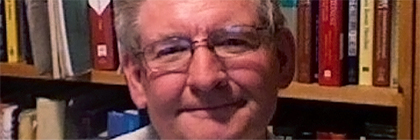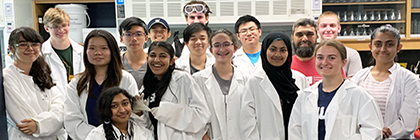York University Professor Emeritus Martin Muldoon of the Department of Mathematics & Statistics, Faculty of Science, died on Aug. 1 after a short illness.

Muldoon was born in County Mayo, Ireland, in 1939. He received his bachelor’s and master’s degrees at the National University of Ireland, Galway, and his PhD in 1966 at the University of Alberta, under the supervision of Professor Lee Lorch.
Muldoon was a highly achieved scientist, with significant contributions to the fields of special functions and orthogonal polynomials, and to related topics in ordinary differential equations, functional equations and approximations. He had many important publications in influential journals, including the Journal of Mathematical Analysis of the Society of Industrial and Applied Mathematics and the Transaction of the American Mathematical Society. He was a much sought-after invited speaker in seminars, colloquia and conferences globally, and an active member of the SIAM Activity Group on Orthogonal Polynomials & Special Functions. In 2004, he received the 25-year Research Achievement Award from the Natural Sciences & Engineering Research Council of Canada.
Muldoon served the Department of Mathematics & Statistics in a number of capacities, including as departmental Chair, director of the applied mathematics section and member of the departmental executive committee. During his time as Chair, he was responsible for introducing the Mathematics for Commerce program, which led to a significant increase in mathematics enrolments.
“For many decades, Martin has been a consistent source of profound wisdom, integrity and dedication from which the department could draw its strength,” said Walter Tholen, former departmental Chair, interim dean and associate vice-president of research. “On numerous occasions throughout the years, like many others, I was able to rely on his invaluable advice, for which I am profoundly grateful.”
It was not just in the department that Muldoon was held in high regard; he was very active in the Faculty of Arts and served the University as a member of senate multiple times (1974-75, 1976-80, 1984-86, 1982-93, 1994-95 and 1997-2000). His major committee assignments included serving on the Senate Executive Committee, the President’s Advisory Committee on Recruitment and the President’s Advisory Group on the appointment of a vice-president of academic affairs.
Muldoon was a dedicated educator, exceptionally attentive to teaching and individual student supervision. He contributed significantly to the MA program in mathematics for researchers. He participated regularly in outreach programs and gave numerous talks to high-school and elementary students and related audiences, with themes such as “How mathematics can help and mislead,” “Chaos,” Mathematics in careers” and “Peace, war and mathematics.”
He was also actively involved in the organization Science for Peace, serving on its executive committee, board and finance committee. He was also in charge of its web pages.
Muldoon is remembered by his colleagues as an extraordinarily patient and supportive gentleman.
His family will receive friends at the Humphrey Funeral Home A.W. Miles – Newbigging Chapel, 1403 Bayview Ave. (south of Davisville Ave.) for a celebration of life at 1 p.m. on Friday, Sept. 13.


























 It was 50 years ago this July that the first man walked on the Moon as part of the Apollo 11 mission. Come celebrate that lunar achievement at a free event with York University’s Allan I. Carswell Observatory team in the Faculty of Science, from July 16 to 18.
It was 50 years ago this July that the first man walked on the Moon as part of the Apollo 11 mission. Come celebrate that lunar achievement at a free event with York University’s Allan I. Carswell Observatory team in the Faculty of Science, from July 16 to 18.